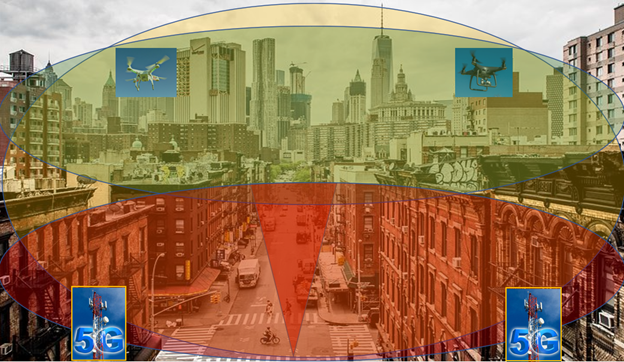
The puzzling part of this is that unlike creating autonomous vehicles, where machine learning and deep learning are still major challenges, the technology and know-how exist to design and deploy most of what is needed now, albeit it from a variety of industries. (Which is part of the problem.) The most concerning part is the apparent lack of end-state designs, top-down systems engineering and deployment plans, including air and ground air traffic control at least as far as what the community is sharing, especially NASA and the Federal Aviation Administration (FAA).
This is particularly concerning given how long it will take to design and field solutions given there are already driverless vehicles and robots on our streets and in the air now.
It seems as if the industry is somewhat Pollyanna and not giving nearly enough respect to Murphy, choosing to follow IT/Silicon Valley “Agile” methods that are often void of systems engineering, exception handling or “what if” scenarios at a total system level. Complex safety-based systems are not the time or place to “move fast and break things”.
One significant accident involving a child or family and progress will come to a grinding halt. With seven people around the world killed needlessly by autonomous vehicles to date and trust in the FAA and autonomous systems low, one would think the current approach and posture would be the opposite of what it is. I would like to suggest a way forward to remedy this.
The way forward – integrated air and ground domains
Create a list of complex urban end-state use cases and associated challenges
- Expected or desired use cases
- “What if” scenarios or exceptions should include streets and air ways cluttered with a variety of entities both wanted and unwanted. Envision air and ground chaotic operation and chain reactions, especially regarding non-cooperatives. Include natural and man-made issues or disasters requiring more federal interventions.
Match technology to use cases – identify and resolve technical gaps
- V2X 30mhz bandwidth limitations for combined air and ground use (see further sources below) . Many drones and remote operated ground vehicles require sensor data, including video, to operate. Where is this bandwidth coming from long term?
- Current public UAM plans assume UTM is adequate and do not include independent active object detection and avoidance, like passive and active radar, and assume all air entities can deconflict on their own.
- There does not seem to be a plan for integrated air and ground situational awareness and command and control – no common operating picture which will be needed to help resolve V2X 30mhz bandwidth issue as well as entity deconfliction.
Create integrated simulated and real-world modeling for development, testing and public awareness
- Digital twin – Model exact locations and objects to include sensor and 5G/sensor material reflectivity characteristics. This would ensure there is no false confidence in location or operation of these systems, especially in edge cases, to include bad weather. There cannot be communication dead zones from blockages, multi-path or even moving objects like aircraft, buses etc. The simulation and modeling technology and approaches used seem to be limited to gaming technology, which is extremely prevalent in the industry. Gaming technology has technical limitations that significantly limits active sensor modeling and real-time operation. Technology from DoD/aerospace/FAA would resolves this (See below).
- Model dense and chaotic entity movement – Vehicles, people, animals, robots, bikes, birds, drones, aircraft, balloons etc
- Model all spectrum and associated messages with high volume – V2X (J2735), ADS-B telematics, UTM, sensor data etc
Create system of systems design and progressive implementation plans tailored by location
- Command, Control, Computers, Communications (C4)
- Infrastructure, power, cyber security
- Use simulation with real-world integration and verification
- Factor in redundancy, outages, hacking etc
- Include right of way, zoning, regulatory, financial, and logistic processes, and timelines
- Include technology and approaches from other industries like DoD (Link-16, DDS etc)
- Integrate with all local, state, and federal agencies. Include “what if” scenarios
- Create near and long-term plans
- Fill short term gaps – even if the solution is temporary
- Communicate this to the public – Request public input
For more information
The V2X 30mhz Issue should be addressed now with DoD Technology and Approaches
SAE Autonomous Vehicle Engineering Magazine – Simulation’s Next Generation
Simulation can create a Complete Digital Twin of the Real World if DoD/Aerospace Technology is used
V2X is Way Too Slow at 10hz
FAA making a grave error in granting autonomous drone and aircraft waivers to develop in the public domain
Michael DeKort has worked for Lockheed Martin, the US State Department, The US Navy and in the IT industry in areas such as aircraft simulation, as the software engineering manager for NORAD, a program manager for the Aegis Weapon System, and as a C4ISR systems engineer for DHS/US Coast Guard. He is currently involved in autonomous vehicle, smart city and V2X systems engineering and simulation.


